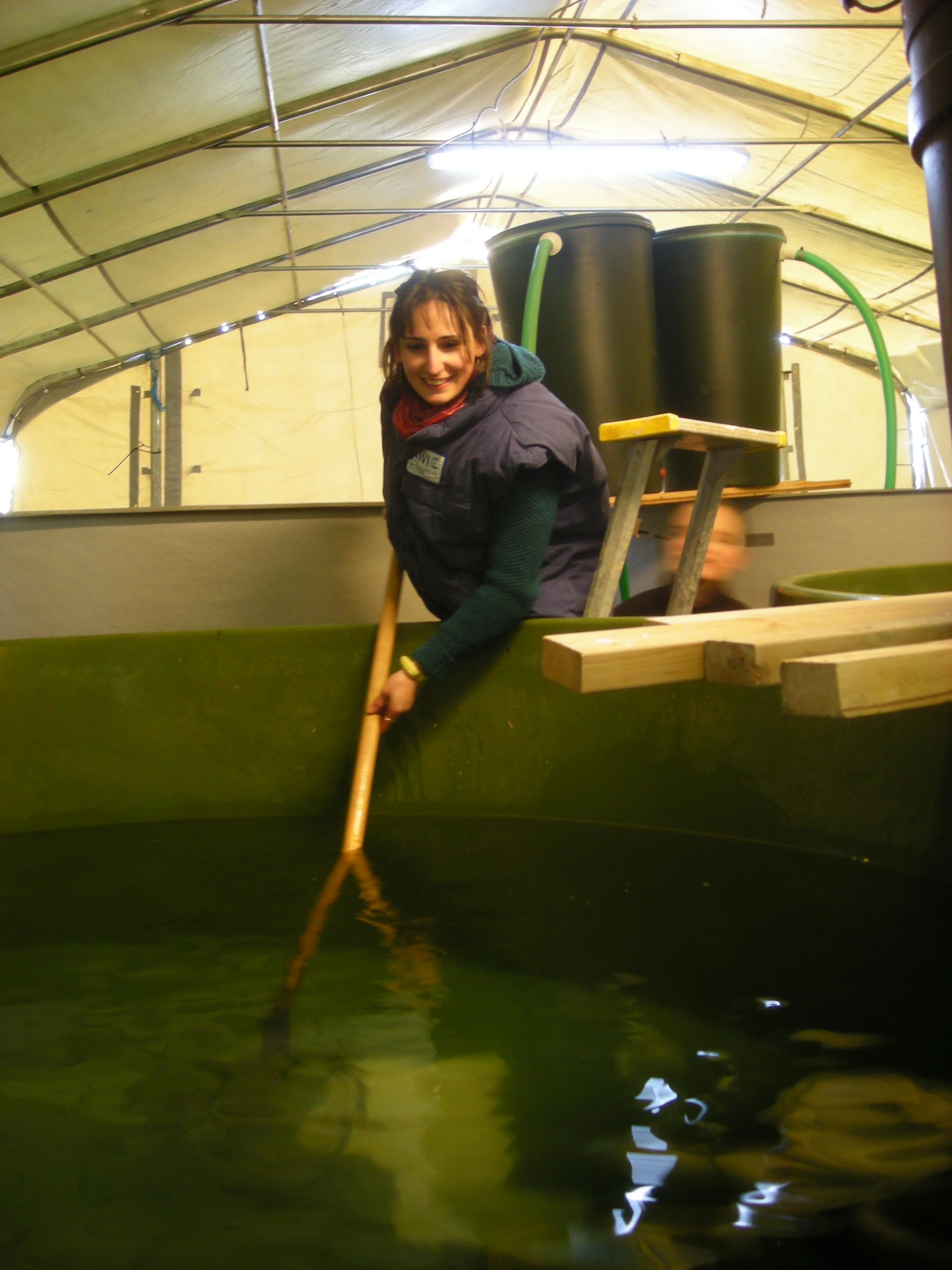Cold Blood in Warming Waters
Bethany Gaffey
This week on Too Hot to Handle, we got the inside scoop on Elettra Leo, an Italian PhD candidate studying temperate and polar fishes in Germany. Keep reading to find out how Elettra’s research on mitochondrial function and temperature sensitivity can shed light on the effects of ocean warming and acidification in fish in the Northern Hemisphere.
Hi Elettra! Tell us a little bit about yourself
Hello! My name is Elettra Leo. I grew up in Genoa in northwest Italy, but at the age of 20 I moved to Trieste at the far east of Italy to study Environmental Biology. For my masters thesis, I went to the Alfred Wegener Institute in Germany and I am still there today working on my PhD in Integrative Ecophysiology.
Photo: Elettra Leo
What inspired you to become a marine scientist?
I grew up in a coastal city, thus the sea has always been inside me. Moreover I have always been passionate and curious about animals, fish in particular, hence the connection between the two was a natural evolution, I guess.
How did your journey through marine science lead to studying ocean warming?
While studying marine biology I came across the animals living in Antarctica. The amount and diversity of adaptations that those animals, especially the cold-blooded ones, developed to cope with the harsh environment struck me. I was fascinated by the fine-tuning of their metabolism and how perfect but fragile they are. Thus I started to study the effects of ocean warming on the metabolism of fish that evolved in cold waters.
Can you summarize the questions your studies are currently examining? What knowledge do you hope to gain from these studies?
At the moment I am studying the effects of ocean warming and acidification in fish of the Northern Hemisphere. I compare temperate and polar fish to see how their mitochondrial function responds and if this response can be linked to the origins of the fish (i.e. polar fish respond in a different way than temperate fish). I also focus on the differences in sensitivity that may occur between life stages.
GONE FISHING – Elettra nets Atlantic cod from tanks where they have been acclimated to future world water conditions. Photo: Elettra Leo
What factors do you use to determine that a marine species is an appropriate subject for your research projects?
That's tricky! There are many. I look at the characteristics of the species, at the distribution, if the specimens are easy to obtain and to maintain in lab facilities, and if there is already an extensive literature on the species. These are very fundamental factors for a project. But there is one I started to value more and more every day: the human factor. If a species is economically important or threatened by human activities, then the knowledge produced by the project can be directly transferred to policy makers.
GONE FISHING – Elettra nets Atlantic cod from tanks where they have been acclimated to future world water conditions. Photo: Elettra Leo
What are some of the methods you use to study the marine species you select? Do you use generally accepted methods or are you trying anything unusual or new?
To study the mitochondrial function I use high-resolution respirometry. It is a very well established method.
TO THE LABORATORY - Elettra tests the mitochondrial function of Atlantic cod with high-resolution respirometry. Photo: Elettra Leo
Can you summarize what your results have shown? How do they compare to other results in this field?
So far, my results show that mitochondrial function is a good predictor of temperature sensitivity. Developing embryos are more sensitive to ocean warming than young adults, thus we should keep them in mind when modeling the effects of ocean warming. Also, temperate species can cope with a larger increase in temperature than polar species. This is in line with both what was found by other studies but also what we see in the field, where the distribution areas of some polar species are shrinking as water temperatures increase.
Why is your research important and what do you want the public to understand or take away from it?
First, we know a little more about the causes of temperature sensitivity: mitochondria and their internal mechanisms play an important role in it.
Next, not all the species respond the same; we cannot focus on one single species because while one may thrive in the new condition, another may suffer.
Lastly, different life stages may have different sensitivities to ocean warming and acidification. If we focus only on what we see today we might not have a “next generation.”
The ocean has changed rapidly in the last couple of decades. Could you leave us with any words of wisdom about ocean conservation?
I am a firm promoter of “a little done by many is better than a lot done by few.”




